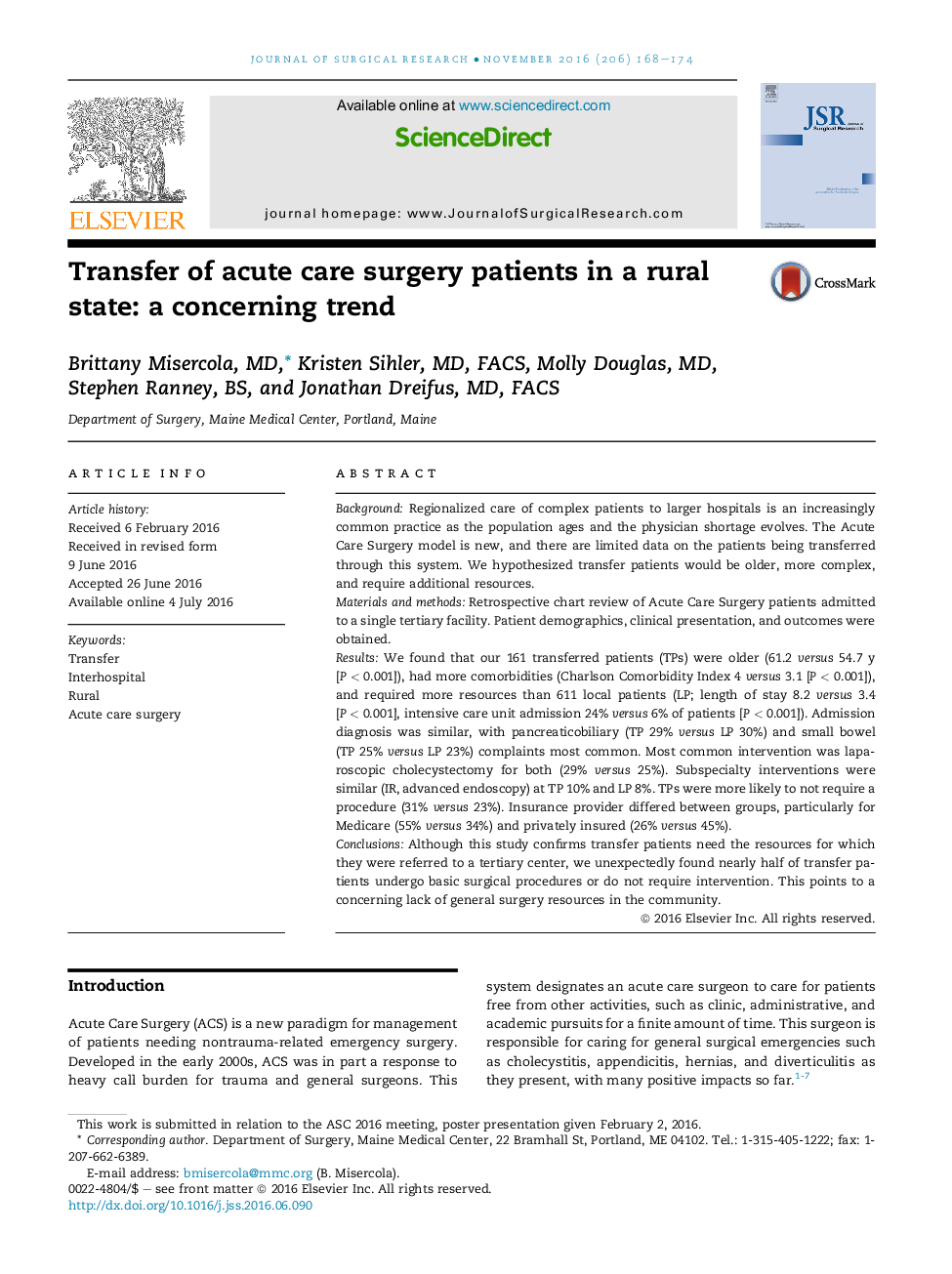| Article ID | Journal | Published Year | Pages | File Type |
|---|---|---|---|---|
| 4299063 | Journal of Surgical Research | 2016 | 7 Pages |
BackgroundRegionalized care of complex patients to larger hospitals is an increasingly common practice as the population ages and the physician shortage evolves. The Acute Care Surgery model is new, and there are limited data on the patients being transferred through this system. We hypothesized transfer patients would be older, more complex, and require additional resources.Materials and methodsRetrospective chart review of Acute Care Surgery patients admitted to a single tertiary facility. Patient demographics, clinical presentation, and outcomes were obtained.ResultsWe found that our 161 transferred patients (TPs) were older (61.2 versus 54.7 y [P < 0.001]), had more comorbidities (Charlson Comorbidity Index 4 versus 3.1 [P < 0.001]), and required more resources than 611 local patients (LP; length of stay 8.2 versus 3.4 [P < 0.001], intensive care unit admission 24% versus 6% of patients [P < 0.001]). Admission diagnosis was similar, with pancreaticobiliary (TP 29% versus LP 30%) and small bowel (TP 25% versus LP 23%) complaints most common. Most common intervention was laparoscopic cholecystectomy for both (29% versus 25%). Subspecialty interventions were similar (IR, advanced endoscopy) at TP 10% and LP 8%. TPs were more likely to not require a procedure (31% versus 23%). Insurance provider differed between groups, particularly for Medicare (55% versus 34%) and privately insured (26% versus 45%).ConclusionsAlthough this study confirms transfer patients need the resources for which they were referred to a tertiary center, we unexpectedly found nearly half of transfer patients undergo basic surgical procedures or do not require intervention. This points to a concerning lack of general surgery resources in the community.
